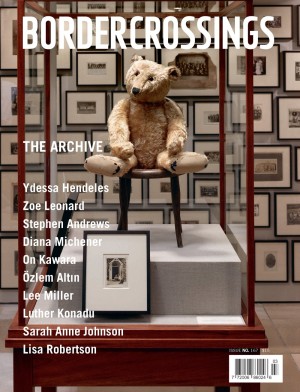Dean Drever
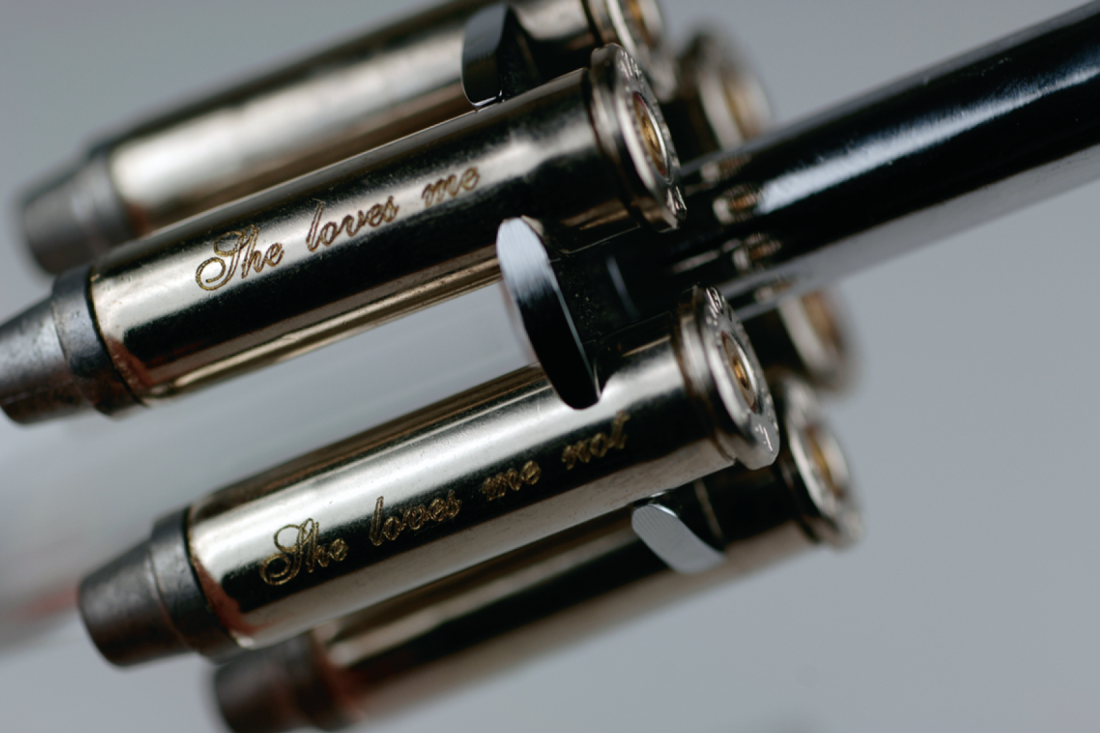
Dean Drever, Hollow Point, 2006, detail, .357 Magnum hollow point bullets, speed loaders, stainless steel, brass, lead, hand-engraved, each bullet 2.5”. Images courtesy the artist and Douglas Udell Gallery, Vancouver, Edmonton, Calgary.
Edmonton-bred, Toronto-based artist Dean Drever’s Seven Deadly Roundels depict the national symbols of countries actively engaged in war and used to identify each other on the battlefield. Drever’s signs of war are also worldly sins: he has designated a sin for each country, chosen for its relevance to that nation’s international identity, and coloured each roundel accordingly. Setting your jihad binoculars to a blast-hole in the wall in order to survey the street below your post in a bombed-out apartment block, you might see a Canadian Humvee convoy tattooed with a maple leaf (green with envy), an American Blackhawk wearing a glutton’s black star, Great Britain’s tanks carrying the purple, prideful bull’s eye, or a slothful India decked out with a pale blue sunburst. Russia, the lusty pink star. Red star, symbol of North Korea’s wrath. China completes the seven with a greedy yellow sun.
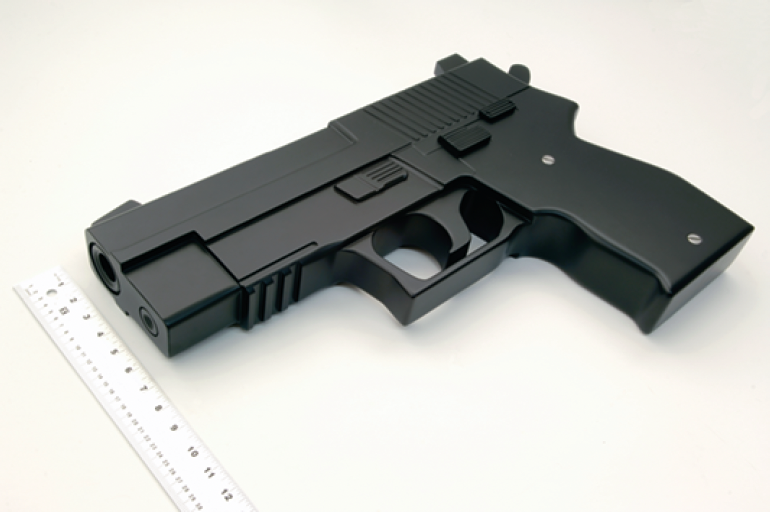
Dean Drever, Automatic Handgun, 2007, hand-tooled aluminium, lacquer, 27 x 16.4 x 4.2”.
By a process that required the expertise of Ferrari, Drever has turned these military icons into museum candies. Each roundel begins as a piece of aluminum taken to the Ferrari painting studio, where it’s cut and machined to a diameter of 22.75 inches, then sanded and polished to a glassy finish before it is painted. Each colour is sprayed on 90 times, then pumiced by hand until it shines like the surface of a lozenge. The roundels look good enough to eat, if only they were the size of Xanax. Instead, they are a daunting addition to Drever’s already threatening art practice, one that has seen him turn out brass knuckles, oversized guns, and engraved baseball bats and bullets. Like the Brooklyn artist of the same generation, Jason Clay Lewis, who has also engraved bullets and made brass knuckles, not to mention sculpted with rat poison and otherwise beautified images of violence and death, Drever’s roundels are a set of seven Warholian objects of attraction. As Pop art commodities paying tribute to the war machine, they are inedible confections, mint and seductive on the surface, sour and disturbing at the core. They are cold, ironic, yet inviting. Drever’s observation that our desire for luxury and perfection is like a sugar-coating over the ruthlessness of the military engine might still be an important reminder for the art world that the value we place on beauty can sometimes cost us our peace.
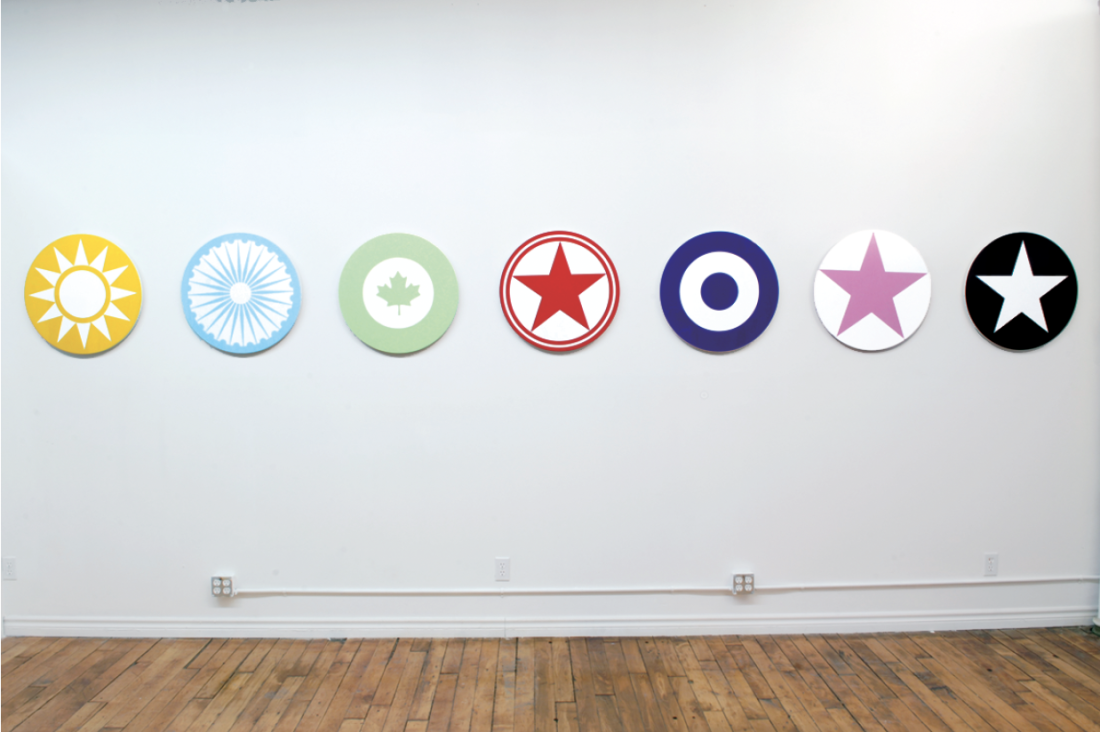
Dean Drever, Seven Deadly Roundels, 2007, installation, China, India, Canada, North Korea, Britain, Russia, U.S.A., aluminium, lacquer, each Roundel 22.75 x 0.5”. Photo: Chris Chown, Toronto.
In the southern US, they call it candy paint when you get your car done in a hand-mixed colour. When a vehicle comes out of the artisan’s garage—with the striking palette and glossy finish with a bit of sparkle—it’s supposed to look like candy driving by. Only a Ferrari has more shine than a jellybean. What, besides this perfect shine, can Ferrari’s meticulous studio offer Drever that another, less than perfect, environment could not? An artist doesn’t randomly choose Ferrari to help him paint. Opportunity must have played some part in the connection, and Ferrari does have a painting studio in Toronto. The first synchronicity is that there are only seven Ferrari painters in the world. Drever also uses our associations with speed, power, money and beauty to reflect on the way we perceive symbolism within the military. The military industrial complex, as it was so often called when I was younger, is far less unified today. War is like everything else now, a network of hubs, jihads, private defense contractors, mafias and traditional army corps, all serving active duty under radically different commands. The skill of Ferrari’s engineers is as uncompromising in their particular field as a general’s must be to succeed in his. Ruthless. In the design of an optimal driving experience, from the body to the engine, no matter how much labour is involved, Ferrari is not your typical car assembly line. Perhaps it’s this illusion of manufacturing that interests Drever, for that is often how nations see their troops. There are many who would argue that Ferrari’s own opulence is a sin, too, that the ambition to create the fastest, hottest, sexiest, most expensive car also drives men to murder each other over money.
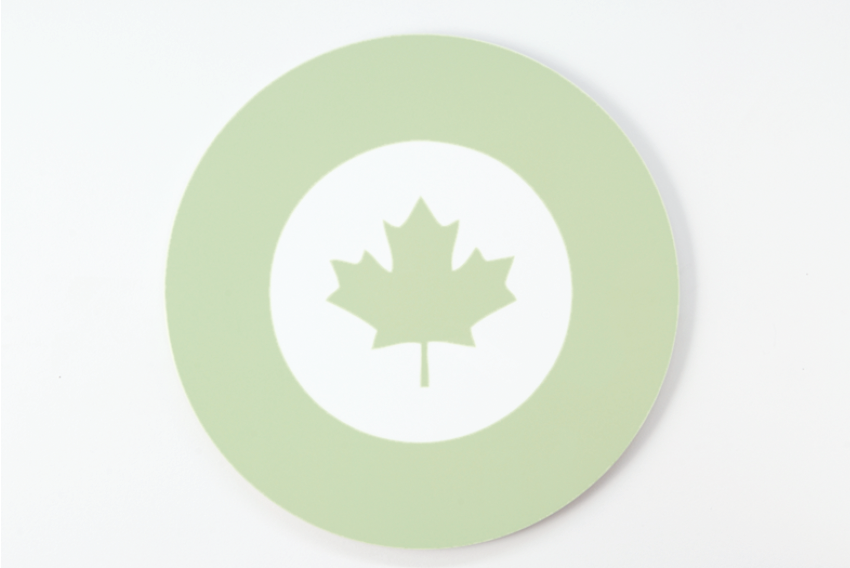
Dean Drever, Seven Deadly Roundels, 2007, detail, Canada, aluminium, lacquer, 22.75 x 0.5”. Photo: Chris Chown, Toronto.
The War on Terror is generally accepted to also be a war for oil, the stuff that keeps Ferraris running. If, in Drever’s appropriation of Ferrari, there are all these parallels to be found between war, cars and art, then the critique is also laced with something quite the opposite. There must also be signs of Drever’s respect for the craftsmanship; he’s the conceptual artist apprenticing himself to the automotive master. All politics aside, the art of a Ferrari sports car—those seven painters are leaders in their field—must also have inspired Drever to ask for their assistance in helping him realize this project.
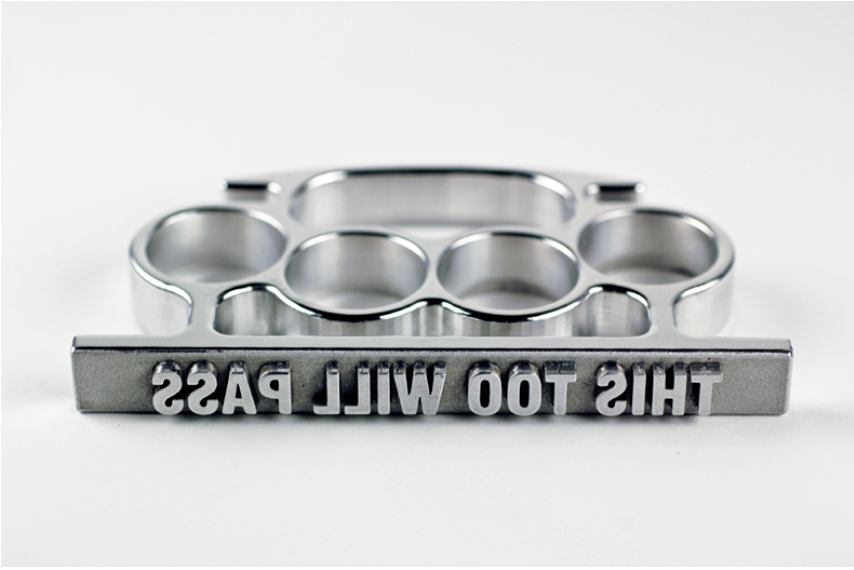
Dean Drever, Knuckle Dusters, 2006, detail, THIS TOO WILL PASS, stainless steel, 4.2 x 2.85 x 0.75”. Photo: Chris Chown, Toronto.
Violence is never an unpopular theme in art. But for the postmodern, it can be as difficult to pull off as love or sorrow. The artist’s urge to scream in protest is tempered by an acknowledgement of the sensitivity of his audience. Drever’s work has much in common with many artists of his age who can’t help their tendency to exalt, condescend and imitate artfully, all in the same breath. ■
“Dean Drever—Big Guns” was exhibited at Douglas Udell Gallery in Calgary from September 6 to 22, 2007.
Lee Henderson is the author of a book of short stories, The Broken Record Technique. His first novel, The Man Game, will be published by Penguin Canada in early 2008. He is a Contributing Editor to Border Crossings.

Dean Drever, Knuckle Dusters, 2006, installation, THIS TOO WILL PASS, THIS IS NOT GOING TO BE OK, THIS WILL NOT GO OVER YOUR HEAD, I LOVE DEAN DREVER SCULPTURE, stainless steel, each 4.2 x 2.85 x 0.75”. Photo: Chris Chown, Toronto.

